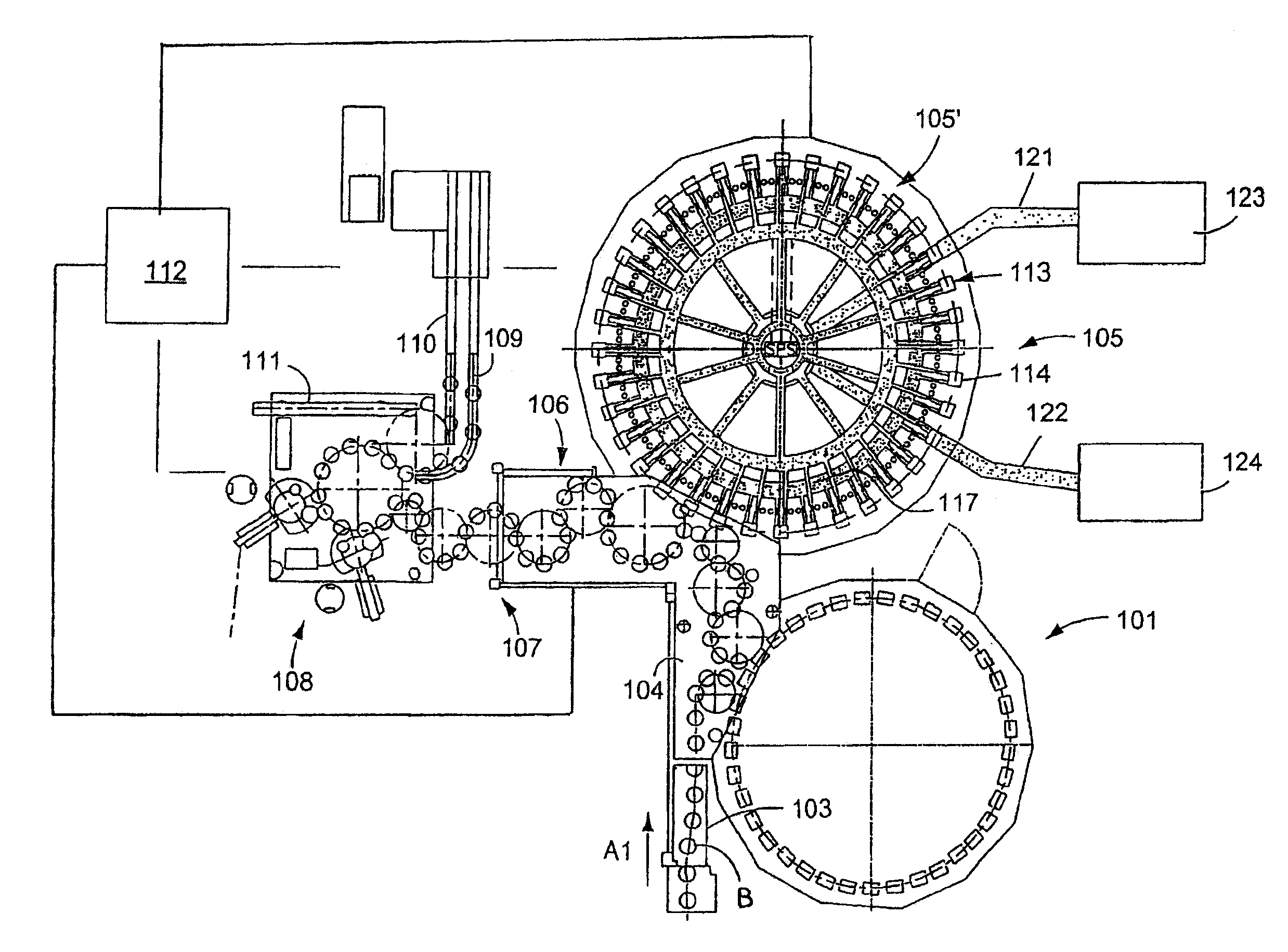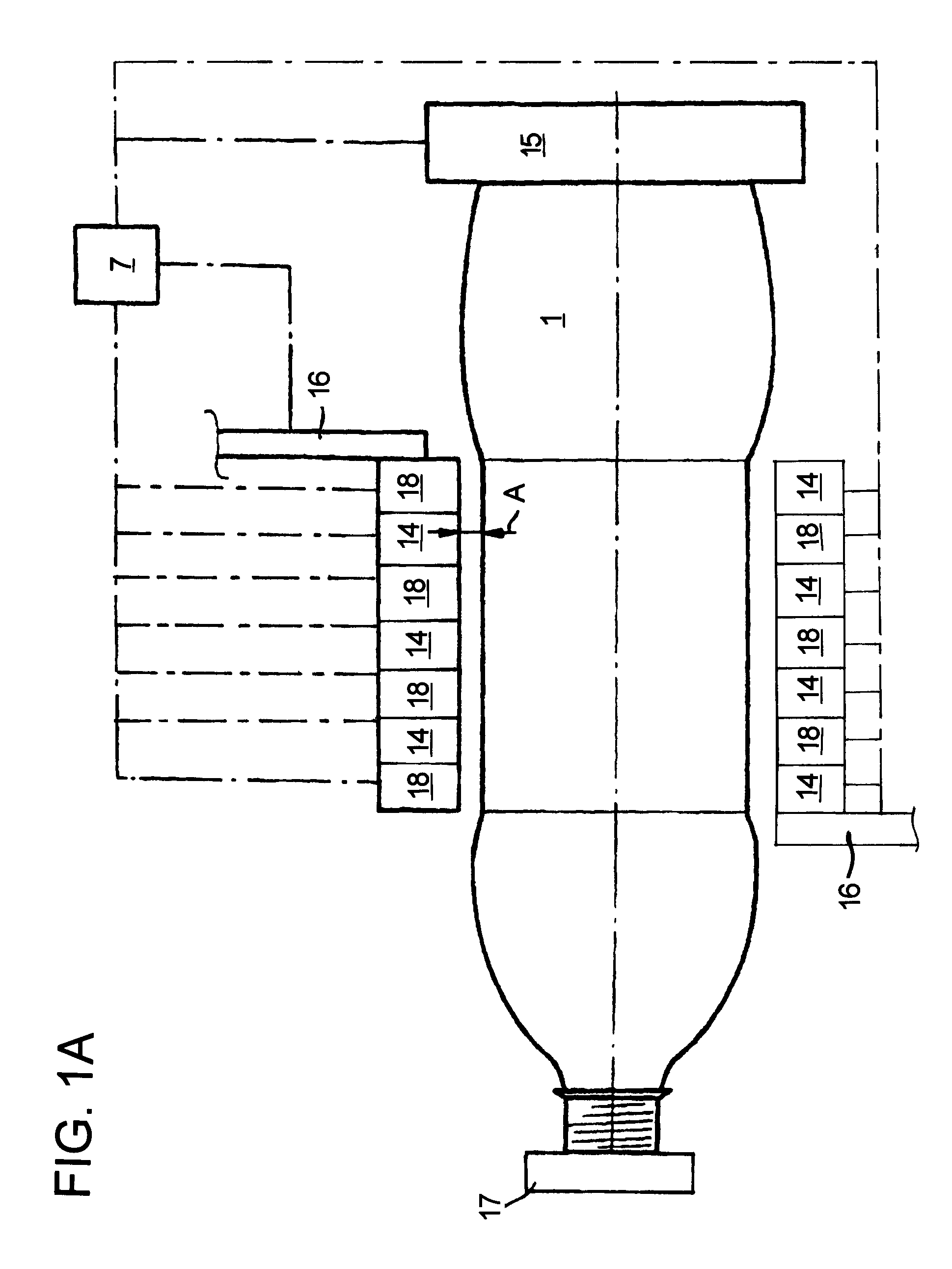Method and apparatus for the circumferential printing onto individual bottles in a run of bottles where the individual bottles in the run have at least one varying dimension due to manufacturing tolerances, the method and apparatus providing more consistent artwork on individual containers in the run of containers
a technology of circumferential printing and individual bottles, which is applied in the direction of printing, typewriters, power drive mechanisms, etc., can solve the problems of running up against limits, applying more ink or paint than is necessary and/or desired on one side, and the other side is affected
- Summary
- Abstract
- Description
- Claims
- Application Information
AI Technical Summary
Benefits of technology
Problems solved by technology
Method used
Image
Examples
Embodiment Construction
[0039]A device for the circumferential printing of containers 1 is shown schematically in FIG. 1. This non-restrictive embodiment is for the three hundred sixty degree printing of cylindrical bottles 1. These bottles 1 could be beverage bottles, which instead of a label bear a three hundred sixty degree print comprising the necessary and / or desired information about the content, the brand, decorative elements, etc. This three hundred sixty degree print is in the form of a printed image 2, which—as will be explained in greater detail below—was applied with no overlap to the container or the bottle 1.
[0040]To this end, the present application first avails itself to artwork 3 that is transferred circumferentially by means of one or more print heads 4 to the container 1, where it produces the printed image. The artwork 3 is provided in digital form as a two-dimensional matrix of colored dots or pixels, as is suggested in FIG. 2. The artwork 3 is in fact two-dimensional and extends over ...
PUM
 Login to View More
Login to View More Abstract
Description
Claims
Application Information
 Login to View More
Login to View More - R&D
- Intellectual Property
- Life Sciences
- Materials
- Tech Scout
- Unparalleled Data Quality
- Higher Quality Content
- 60% Fewer Hallucinations
Browse by: Latest US Patents, China's latest patents, Technical Efficacy Thesaurus, Application Domain, Technology Topic, Popular Technical Reports.
© 2025 PatSnap. All rights reserved.Legal|Privacy policy|Modern Slavery Act Transparency Statement|Sitemap|About US| Contact US: help@patsnap.com



